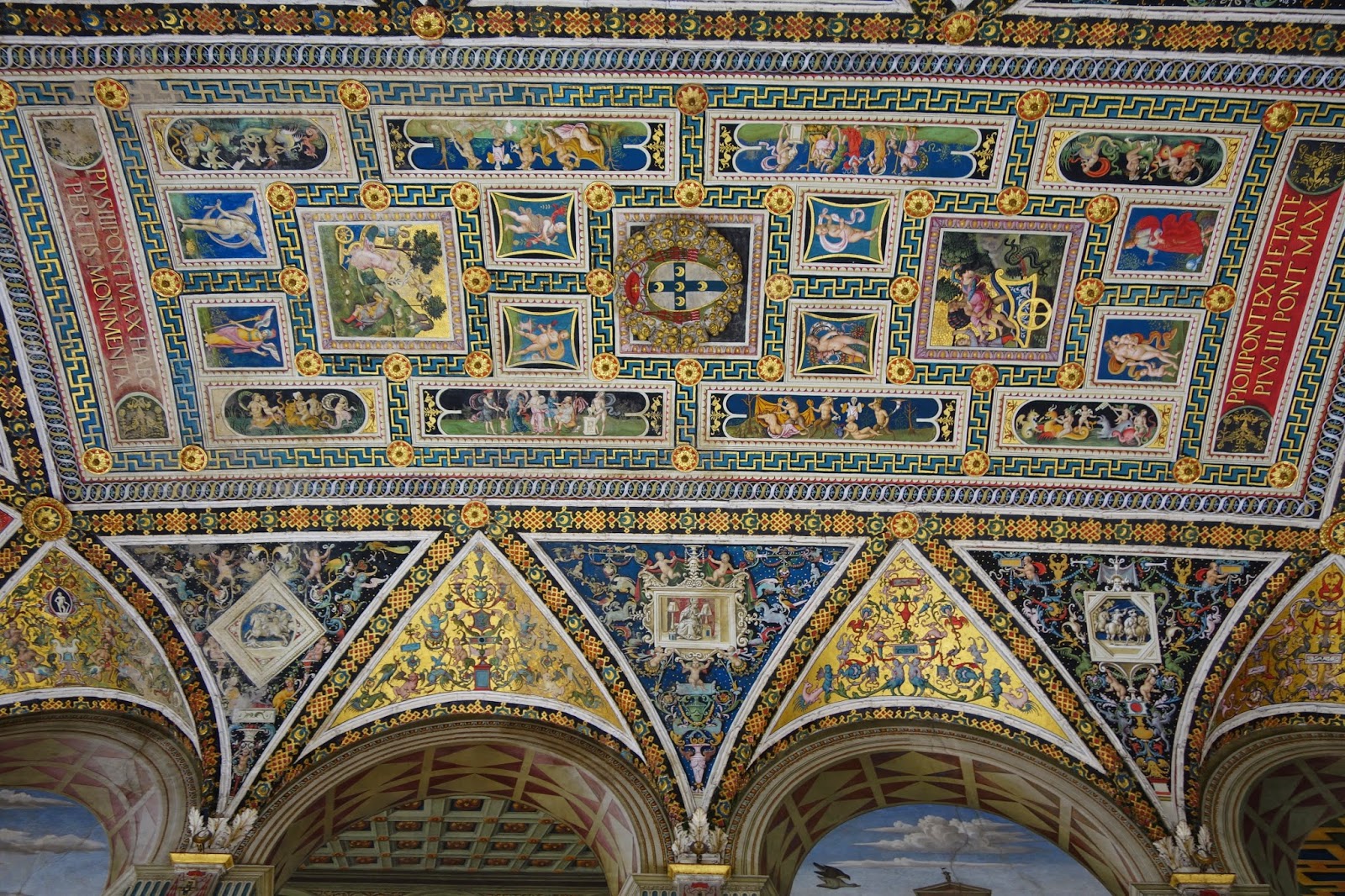Lucca, Pisa, San Gimignano, where to go, where to go? Rick Steves wrote that Volterra is his favorite small town in Tuscany, so after Siena, E and I went to Volterra--with all the other tourists who have discovered this formerly not-overly-touristy hill town.
Now a beautifully preserved small town atop a big hill, with a bazillion shops selling alabaster jim jams, Volterra had a city-state territorial reach during the Renaissance that extended all the way to the Mediterranean and included Siena. Centuries before that, the city was the last Etruscan holdout against an expanding Roman Empire.
 |
| Growing boy enjoying much-needed bruschetta carbs under an olive tree |
 |
| Window decor--best looking Schlumbergera ever |
In the 4th c. BCE, the Etruscans were trying the keep the Romans at bay, and they built a wall around Volterra that was about 4 miles in circumference. A millennium later, when Volterrans were trying to keep other aggressors at bay, they reduced the circumference of the wall to a more easily defended 2.5 miles. In the process, they eliminated all but one of the original gates. The remaining Etruscan gate is one of the oldest known (if not the oldest) half-round arch (~2500 years old). The Romans added some busts to it that, as Rick Steves writes, "show what happens when you leave something outside for 2000 years."

Toward the end of WWII, about three weeks after D-Day, the German soldiers occupying Volterra made plans to beat a hasty retreat. The plans included putting obstacles in the way of approaching Allied troops, so they posted signs warning Volterrans to stay away from the arch because it would be dynamited the following morning. Volterrans spent the entire night blocking up the arch with stones--a risky move, since the Germans had guns and a demonstrated willingness to use them against civilians. In the morning, the Germans decided the gate was suitably blocked and they could better use their dynamite elsewhere. The American troops that arrived to liberate Volterra expected the German occupiers to still be there, so spent a few hours bombarding the town, killing 8 residents, before they noticed the lack of return fire. There's a plaque outside the gate commemorating the effort to save the arch.

Just outside the town wall on the North side of Volterra are the ruins of a Roman amphitheater (ca. 40 BCE). Around the 4th century CE, residents decided they needed nice new baths more than they needed an ancient amphitheater, so they recycled the stones. Eventually, the theater site became the town dump. In the 1950s, archaeologists started digging up the dump, with help from convalescents at the local mental hospital (for whom the digging was considered therapeutic), bringing the amphitheater back to light.
 |
| Zig zags |
 |
| Duomo exterior detail |
 |
| Medici Fortress in the Archaeological Park, now used as a maximum-security prison. |
At about 6pm on our first day in Volterra (6/19), I was felled by the sudden onset of a common cold that stuck with me for a long week, followed by a sinus infection that I finally conquered in an airplane flying over the Atlantic on July 3rd.
S joined me and E in Volterra midday on the 20th. We went to the fabulous Etruscan Museum together after lunch, but I bailed early and went back to our B&B to sleep. What little of the museum I saw might best be described as "abundant Etruscan artifacts meet 19th-century catalogers"--or, for readers familiar with the University of Illinois, "Etruscan artifacts a la Altgeld Hall display cases." S and E also climbed the tower of the town hall and took some photos to prove it.
 |
| Hill town Volterra |



































.jpg)
































